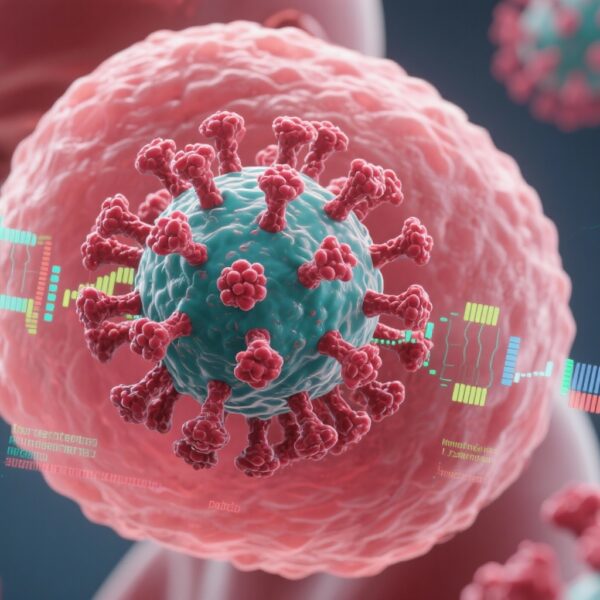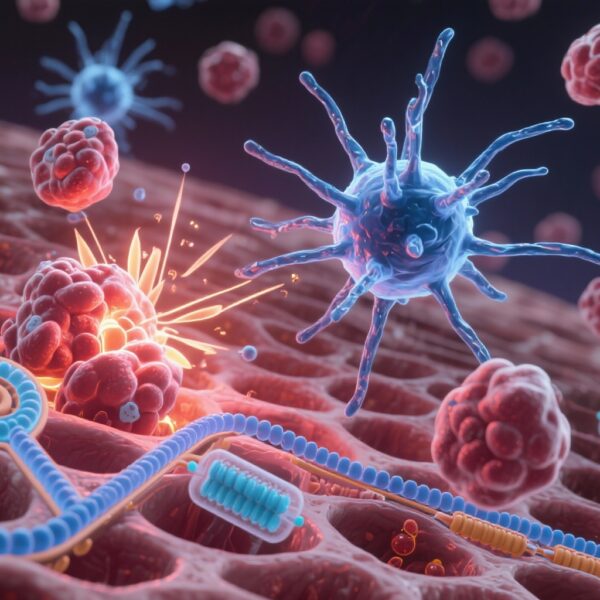Highlight
- A response-adapted daratumumab monotherapy approach in elderly newly diagnosed multiple myeloma (MM) achieved a 97% overall response rate with manageable safety.
- High CD38 expression, a defined plasma cell gene signature, and an activated immune tumor microenvironment correlate with better sensitivity to daratumumab monotherapy.
- Resistance to daratumumab is associated with adhesion, TNF, KRAS signaling, and immunosuppressive microenvironment features, prompting addition of lenalidomide or bortezomib.
- Clonal dynamics reveal early selection of resistance programs and later expansion of pre-existing resistant subclones at relapse, suggesting mechanisms of acquired resistance.
Study Background
Multiple myeloma (MM) is a hematologic malignancy characterized by clonal proliferation of malignant plasma cells within the bone marrow. Treatment advances, including monoclonal antibodies targeting CD38 such as daratumumab, have substantially improved outcomes. However, elderly patients, who represent a significant proportion of newly diagnosed MM cases, often have limitations regarding intensive combination therapies due to comorbidities and frailty. Monotherapy or less intensive regimens are thus critically needed but require biomarkers to guide treatment intensity and predict responses to optimize efficacy and minimize toxicity.
CD38, a multifunctional ectoenzyme highly expressed on plasma cells, is the target of daratumumab, which induces tumor cell death via immune-mediated mechanisms. Clinical responses to daratumumab vary and understanding the determinants of sensitivity and resistance in therapy-naïve elderly patients is essential for advancing personalized treatment strategies.
Study Design
This prospective response-adapted phase II clinical trial (NCT04151667) enrolled elderly patients with newly diagnosed MM who were considered vulnerable or frail for intensive therapy. All patients initiated treatment with daratumumab monotherapy. After two cycles, response was assessed: patients achieving at least a partial response (PR) continued daratumumab monotherapy; those not reaching PR had lenalidomide or bortezomib added to their regimen.
Primary endpoints included overall response rate (ORR), ability to maintain monotherapy, and safety profile. Correlative studies involved assessment of CD38 expression levels on plasma cells, plasma cell gene expression profiling, immune tumor microenvironment (iTME) characterization, and longitudinal clonal sequencing to track resistance evolution.
Key Findings
The response-adapted strategy yielded an impressive ORR of 97% with favorable tolerability. Notably, 37% of patients maintained disease control on single-agent daratumumab without requiring intensification.
Analysis showed that patients able to continue on daratumumab monotherapy exhibited significantly higher CD38 expression on plasma cells at baseline. Gene expression profiling revealed a distinct plasma cell phenotype program enriched in these patients, alongside an activated iTME characterized by signatures of immune cell activation and cytotoxic function.
Conversely, patients requiring addition of lenalidomide or bortezomib displayed increased expression of adhesion molecules, TNF signaling pathways, KRAS signaling, and B cell related programs. These patients also harbored an immunosuppressed iTME, which may impair immune effector functions necessary for daratumumab efficacy.
Longitudinal clonal tracking demonstrated that after only two cycles of daratumumab monotherapy, subclones with de novo resistance gene expression profiles emerged, underscoring early intratumoral heterogeneity driving response dynamics. At relapse, resistant MM cells predominantly expanded from minor pre-existing subclones, exhibiting complex transcriptomic profiles with decreased CD38 expression and persistence of resistance-associated programs. These findings illuminate that acquired resistance involves uncoupling of plasma cell differentiation states and stable transcriptional reprogramming that mitigate daratumumab sensitivity.
Expert Commentary
This landmark study uniquely applies a response-adapted design with single-agent daratumumab as frontline therapy in vulnerable elderly MM patients, a population often underserved in clinical trials. The high ORR and safety profile affirm the clinical utility of this approach. Critically, the identification of CD38 expression levels, plasma cell phenotypes, and immune microenvironment status as predictive biomarkers offers actionable insights for tailoring therapy intensity.
The mechanistic insights into resistance evolution highlight intratumoral heterogeneity and early adaptive changes as key challenges. Prior reports have noted that low CD38 expression impairs daratumumab binding and efficacy, but this work integrates these observations into a broader transcriptomic and microenvironmental context, supporting multi-parameter biomarker development.
Limitations include the relatively small sample size and the necessity to validate findings in larger cohorts and diverse populations. Moreover, the complexity of gene expression and immune profiling platforms may constrain routine clinical application currently, but advances in translational diagnostics promise feasible integration.
Conclusion
This study establishes the feasibility and efficacy of response-adapted daratumumab monotherapy in elderly therapy-naïve MM patients and highlights critical biological determinants of sensitivity: robust CD38 antigen expression, plasma cell transcriptional programming, and an activated immune microenvironment. Conversely, distinct molecular signatures mark patients who benefit from combination therapy intensification due to primary resistance.
The early emergence and clonal expansion of resistant subpopulations underscore the need for vigilant monitoring and potentially preemptive combination strategies. Future clinical pathways may incorporate biomarker-guided adaptive treatment algorithms to optimize efficacy while preserving quality of life in vulnerable MM populations.
These results set a precedent for personalized immunotherapy in MM and provide a framework for future trials exploring targeted combinations based on translational biomarker insights.
Funding and Clinical Trial Registration
The study was supported by institutional grants and research funding from collaborating cancer research organizations. Clinical trial registration number: NCT04151667.
References
Meads MB, Zhao X, Noyes DR, Sudalagunta P, Achille A, Zhang C, Renatino Canevarolo R, Silva M, Magaletti D, DeAvila D, Toska S, Oates A, Lastorino D, Idiaquez DW, Song J, Sansil S, Yoder SJ, Grajales-Cruz AF, Blue BJ, Freeman CL, Kim J, Alsina M, Brayer J, Siqueira Silva A, Song X, Shain KH, Baz RC. Target antigen and plasma cell phenotype are critical factors for sensitivity to response-adapted daratumumab therapy. Blood. 2025 Sep 22:blood.2025029921. doi: 10.1182/blood.2025029921. Epub ahead of print. PMID: 40983035.



